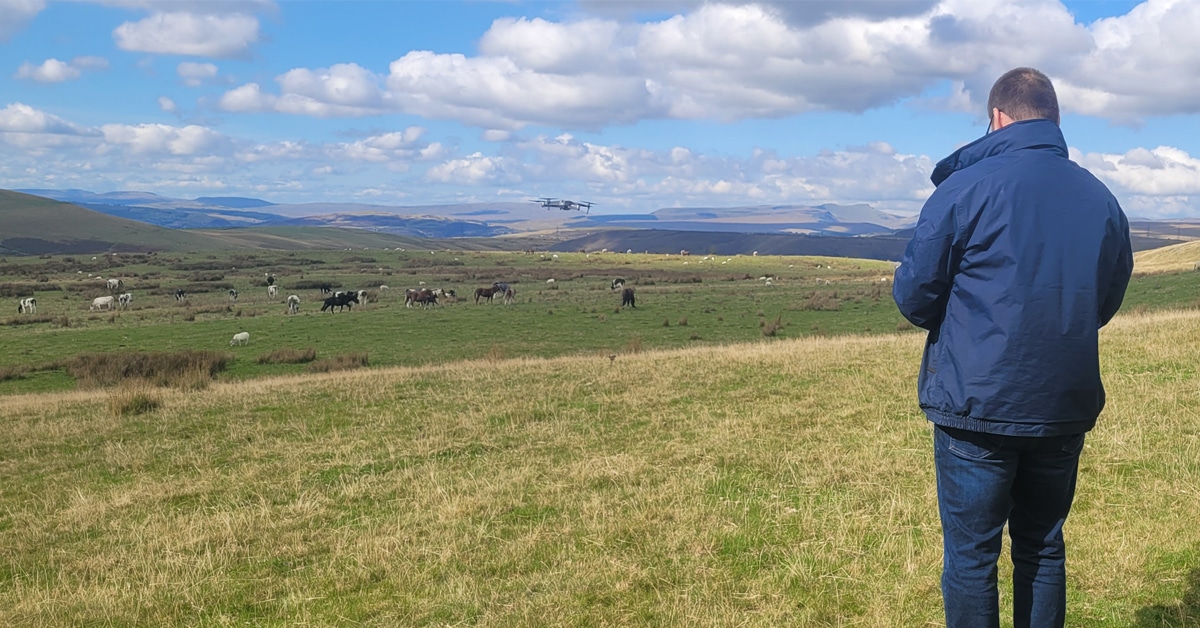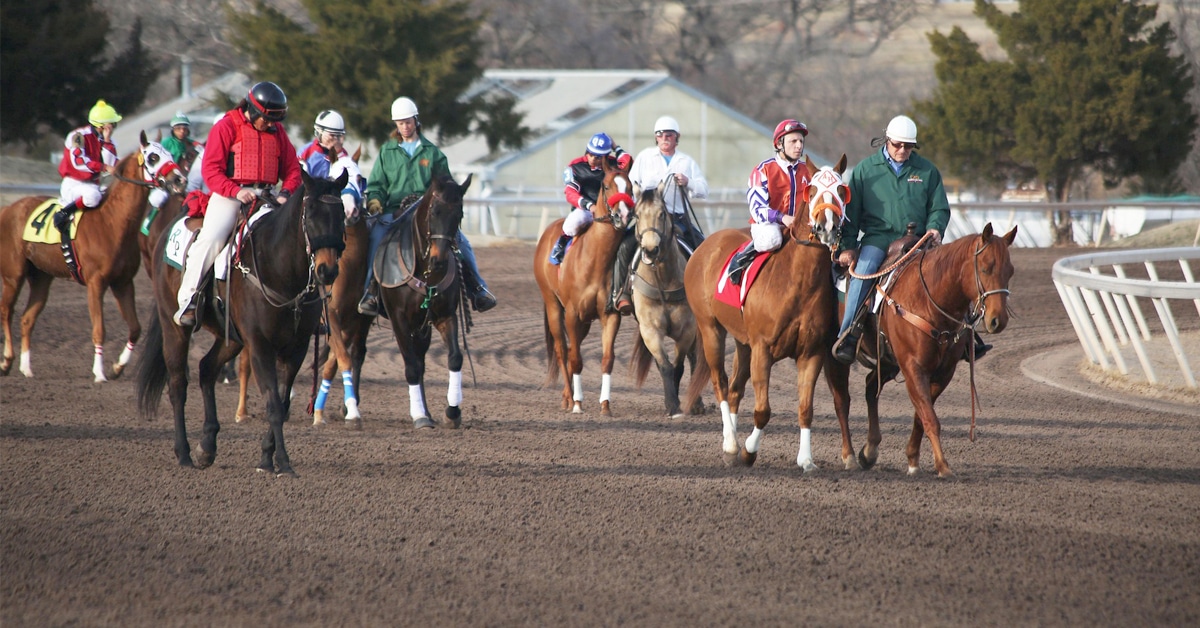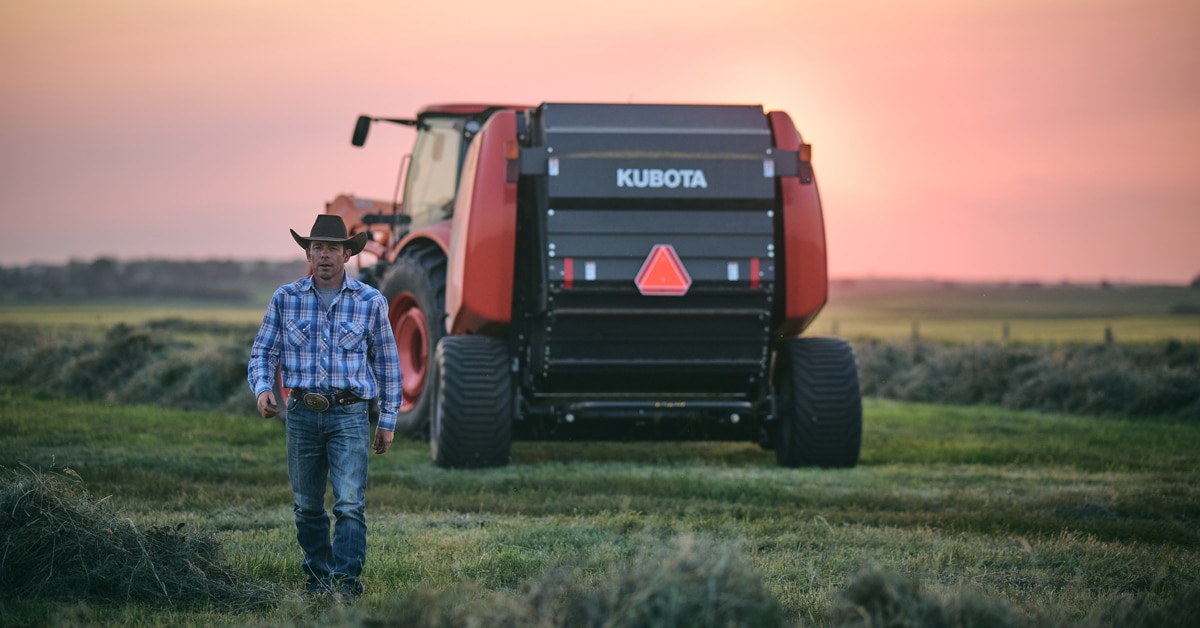Canadian horse owners generally know a thing or two about caring for horses when cold weather sets in. However, there are quite a few winter horse care myths that many still believe to be true, despite the fact that science and modern equine husbandry practices have provided evidence to the contrary. While the very tenacity of these myths might suggest that there must be an element of truth to them, some involve practices that can actually compromise your horse’s well-being, so it is important to know myth from fact. To help you keep your horse in optimal health and comfort this winter, here are some truths that debunk seven of the most common winter horse care myths.
Myth 1: When it comes to feeding, a good way to help your horse stay warm in cold weather is to give him more grain.
Fact: While grain and other sources of concentrated calories can help maintain an insulating layer of fat on a horse, increasing hay is actually a better way to generate warmth. This is because hay contains large amounts of fibre, which is digested in the hind gut by bacterial fermentation, a slow process that releases a significant amount of heat. Grain and processed feeds pass through the gut much more quickly and don’t have the same “internal furnace” effect. There is also evidence that the risk of colic increases as the consumption of concentrates increases, as does the incidence of other serious problems like gastric ulcers and hind gut acidosis, all of which make bumping up the hay a much safer bet.
Myth 2: If your horse doesn’t work much in the winter, he needs less hay.
Fact: Horses have certain minimum roughage requirements to keep their digestive system functioning well. Typically, this minimum equates to about 2% of the horse’s body weight in hay per day, and that doesn’t change just because your horse is working less. It is certainly possible that his caloric needs might be reduced in relation to a lighter workload, but if he is exposed to lower temperatures, he will still need plenty of hay to maintain his body warmth, as mentioned previously, and he will need enough calories to maintain a healthy body weight in the colder weather.
If you find that your horse tends to gain weight in winter, try lowering his intake of concentrates before cutting his hay, and you may want to find a lower calorie/lower carbohydrate hay than what you feed when he is working. You might also want to consider feeding his hay in a slow feeder net, which can help stretch out his eating time and alleviate boredom.
Be aware that reducing the overall amount of hay below that 2% threshold can potentially lead to problems like ulcers, as a horse’s stomach quickly becomes very acidic when it is empty. The discomfort caused by this high acidity can also lead to issues such as chewing on wood, cribbing or the consumption of bedding, especially if that bedding is straw. As straw typically has only about 12% fewer calories than low-carb hay, a horse that eats straw isn’t getting much benefit if weight loss is the goal, and eating straw in any significant amount may increase a horse’s risk of impaction colic.
Myth 3: Horses can get all the water they need by eating snow.
Fact: The winter diet of most Canadian horses is mainly comprised of hay, which contains very little water. On such a diet, a horse is not likely to consume enough snow to keep up a healthy level of hydration. One study done in Norway did find that a group of Icelandic horses showed no evidence of dehydration after having snow as their only water source for nine days, but those horses were eating grass silage, which has a water content of 70-75%, whereas the water content of baled hay averages around 8%. It is probable, therefore, that the water needs of the horses in the study were significantly offset by their diet.
So, while you may indeed see your horse enjoying a chomp of snow out there, don’t depend on that consumption to keep him safely hydrated. Some even believe that eating snow may be more of a grazing/hunger behaviour in horses than a result of thirst, as horses are meant to be “trickle grazers” and spend an average of 16 hours a day grazing under natural conditions. Eating snow may satisfy this grazing drive to some degree, and it may also mitigate the buildup of stomach acid that can quickly lead to discomfort when a horse’s stomach is empty for more than a few hours.
Myth 4: Horses don’t sweat much when it is cold, so you don’t need to be concerned about salt intake in the winter.
Fact: It is true that colder temperatures and a decrease in exercise during the winter months mean less sweating for many horses, but even so, salt intake in winter is actually something you want to pay very close attention to. Here’s why it matters: Horses sometimes fail to drink enough water in the winter, possibly due to water sources being colder and, therefore, less inviting. Reduced water intake, coupled with the consumption of dry forage, can leave horses more vulnerable to impaction colic, which is known to occur more frequently in winter months. One proven way to help counter this potentially deadly problem is to ensure that your horse gets enough salt – a minimum of two tablespoons per day for an average-sized horse at maintenance in cool or cold weather. Ingesting salt increases thirst, which leads to more water consumption and reduces the risk of impaction.
Unfortunately, most horses do not consume enough salt on a daily basis if the only available source is a salt block. Salt blocks were designed for cows, who have rough tongues able to rasp off plenty of salt per day. Horses’ tongues are too soft to do this, so many equine nutritionists now recommend keeping loose salt available at all times, either instead of or in addition to a salt block. You can also mix a tablespoon (about 14 grams) of salt into a warm mash made from grass pellets or another type of safe feed and give this twice daily to be absolutely sure your horse is getting the minimum recommended amount. Another option is to dissolve the salt in water and spray it on the horse’s hay.
Myth 5: If it’s cold enough that you need to put on a winter jacket, your horse needs to be blanketed to stay comfortable.
Fact: Heathy horses in good weight and sporting a natural, unclipped winter coat are actually most comfortable in temperatures that we would find cool to downright freezing. Given adequate feed and access to shelter if they want it, these horses can actually do fine in temperatures down to -40° Celsius. Blanketing such horses is not only unnecessary, it can actually be detrimental, as temperature fluctuations may lead to overheating in a blanket, and blanketing can promote skin problems ranging from rubbing to fungal infections, especially if the horse is sweating under the blanket. Very wet, windy weather is the most likely to cause unblanketed horses to feel the cold, but if they have a good place to take shelter, most will endure even this with no issues.
If, however, your horse is clipped, ill, underweight or otherwise compromised, blanketing might indeed be necessary. A horse turned out in an area with no shelter may also be more likely to need a blanket, depending on what the weather is like. Therefore, when it comes to blanketing, the “right” answer is completely dependent on the individual and the weather, but feeling a bit chilled yourself is not the best gauge to rely upon.
Myth 6: You shouldn’t blanket horses at all, as blankets flatten their hair, eliminating the warm air pockets between the hairs, leaving the horse colder than if he had no blanket.
Fact: While blankets will indeed flatten your horse’s hair in certain areas and diminish the amount of warm air trapped in the coat in those areas, a good quality turnout blanket will more than make up for this with the fill contained between the outer and inner layers of the blanket. The blanket’s ability to keep the horse dry also increases warmth, which is why it is important to have blankets that are both waterproof (to keep outside moisture out) and breathable (to let sweat evaporate).
However, it is necessary to differentiate between turnout blankets and turnout sheets when talking about this point, as sheets contain no fill and will, therefore, not have the same warming effects as a blanket. Sheets are useful for blocking wind and keeping your horse dry in heavy rain, both factors that help a horse stay warm, but if the temperatures are getting down to freezing or below and some extra protection is needed, a blanket with fill may be more appropriate.
Myth 7: In winter, shut the barn up tight when the horses are inside, as they need to be protected from cold and drafts.
Fact: Shutting the doors and windows in your barn is far more likely to cause problems than prevent them. Horses kept in barns are quite prone to developing respiratory problems, in part because dust, composed of both organic and inorganic materials, is an ever-present reality in most barns. Ammonia fumes from urine are also a constant presence in horse barns and another major contributor to equine respiratory disease. Shut all the doors and windows and the concentrations of these irritants can skyrocket, especially inside your horse’s stall.
It is, therefore, far healthier to ensure good airflow into and out of each stall in the barn, even if that means the horses are exposed to cooler temperatures and some drafts. You can always blanket the horses if necessary, and it is worth doing so if it means you can keep the barn air fresh. Keep in mind that given a choice, most horses prefer to be outside rather than indoors, even when it is cold and windy, so that little breeze you wouldn’t want trickling down your neck is not likely to bother them in the same way
The Latest









